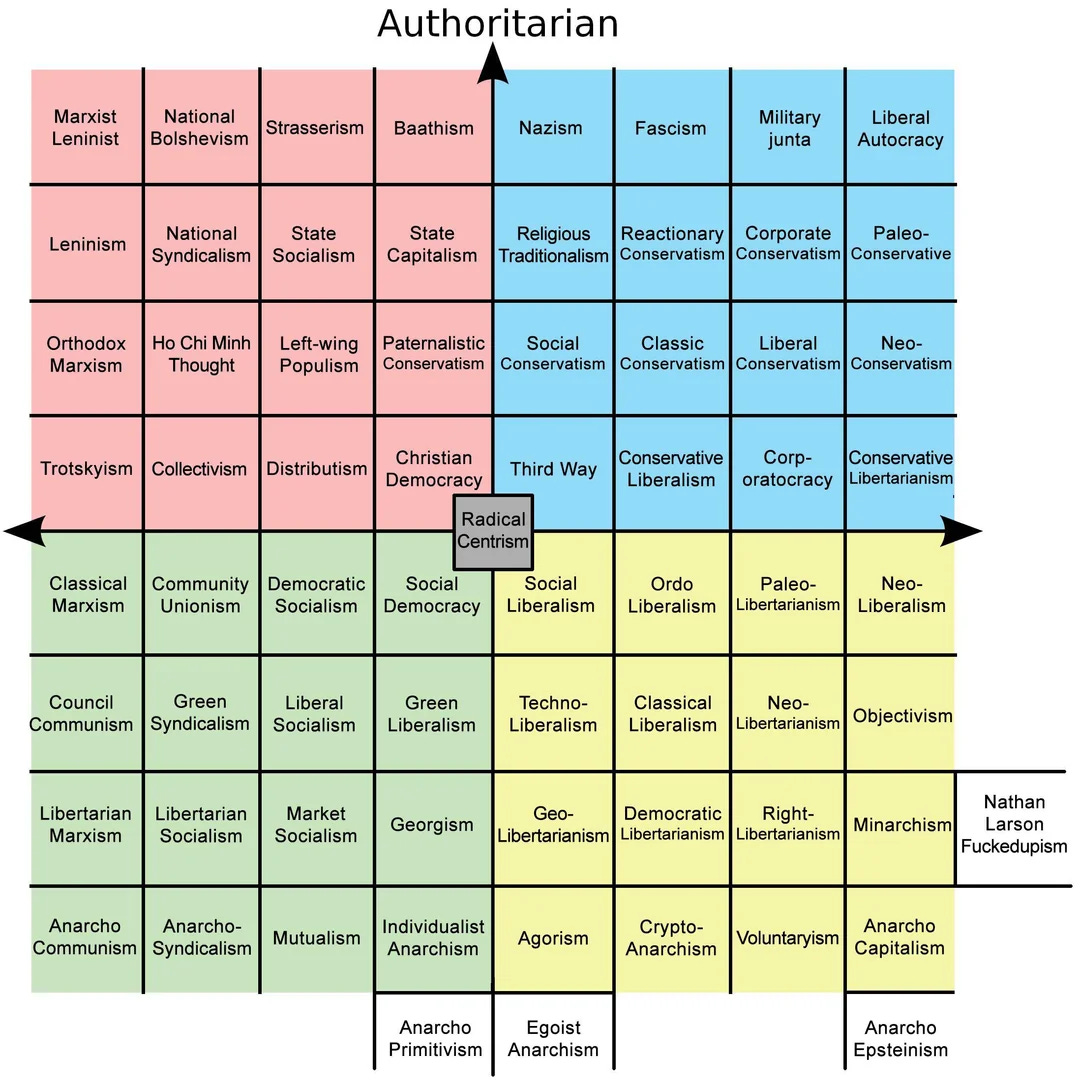Ideologies as Dimensionality Reduction
or: sacrificing nuance for actionability
The world has a benumbing level of informational/perceptual density; billions of lives, trillions of interactions, an uncountable number of subjective experiences.
Navigating & operating in such a landscape would be practically impossible without the required cognitive algorithms.
One of these is dimensionality reduction: in order to enable action, our minds reduce high‑dimensional datasets to smaller sets of principal components deemed relevant for tasks at hand.
In that regard, ideologies are a form of dimensionality reduction on social reality.
No Faithful Ideologies
If ideologies are but an X-dimensional map of the Y-dimensional social reality, then it follows that none of them can be completely “correct”/faithful/representative of the totality of that social reality.
Sure, some of them can be more “correct” or accurate than others, but any one ideology will invariably have to sacrifice nuance for transmissibility, subtleties for actionability.
Let’s look at a straightforward example:
The classic left–right/liberal-conservative political divide attempts to compress multiple economic, cultural, social, and identity variables into a binary.
Expanding the binary into one axis allows for much greater gradation.
Adding a second axis (Authoritarian-Libertarian) adds even more variance:
Yet even two axes flatten what may be a 10‑20-30-dimensional preference space.
Algorithmic Homogenization
Social media algos optimize ruthlessly for engagement — click‑throughs, dwell time, amplification rate, etc. Over the long-term, the content that surfaces convergers on the statistical mean of user behavior, narrowcasting content that is likeliest to capture & monetize attention.
Outlier perspectives receive progressively less exposure, while the more popular, memetic frames are algorithmically boosted, creating algorithmic homogenization of ideas, ideologies, memes.
This becomes an extreme form of dimensionality reduction: social reality is flattened into a handful of high‑engagement truisms. Users are conditioned to signal allegiance to simplified moral binaries, which in turn reinforces the algorithmically sanctioned ideologies. The algorithm thus becomes both a mirror AND an amplifier of simplification, further eroding nuance and shrinking people’s capacity to imagine and/or hold alternative axes of thought.
—
This dynamic has been playing for some years now. I do believe that increasingly adversarial/polluted information environments are pushing us towards a darkforestization (a move away from public feeds to private group chats, forums, communities, etc), which will allow those with trusted, local networks to evade the algorithmic trap & help with capturing nuance & dimensionality, together with the rise of novel ideologies & frames. The rest will be pushed towards further homogenization.
Ideological Humility
Both our cognitive machinery as humans, combined with the dynamic of algorithmic homogenization, creates a particularly perverse dynamic.
Ideologies/maps/models are increasingly mistaken for reality. Nuance is lost, ingroup/outgroup polarization is magnified, perceived certainty erodes out capacity for empathy.
If we are to function in an increasingly dimensionally-reduced environment, we ought to cultivate the necessary sociocultural technologies.
These include:
Cultivating metacognition & meta-ideological awareness
Multi-model & multi-layer thinking (the capacity to hold & employ overlapping lenses of viewing the world)
Epistemic circuit breakers (tools - either technological or societal - that support routine re-evaluation of priors & memetic undercurrents)
Institutional designs that allow for deeper deliberation and the surfacing of diverse realities & dimensions
Ending Note
The very existence of ideologies & compressed lenses of viewing the world are indispensable. They abstract the complexity of social reality into narratives that enable action. Yet precisely because they are abstractions, we must wield them with awareness and failsafes, remembering always that — yeah — the map is not the territory. To navigate increasingly accelerationist futures, we need people & institutions fluent in the world’s inherent dimensionality, able to toggle between simplified abstractions & nuanced complexity as circumstances demand.
—
P.S. Language itself is a tool for dimensionality reduction — attempting to squeeze all those perceptual dimensions into words, phrases, paragraphs, so as to better enable communication, coordination, and collaboration.



As you say, Language itself is a reducer. One might think of language as the Platonic forms, or at least the words we all agree on in the abstract. Why do we agree? We agree on the functionality of the word. So the word "chair" doesn't mean banging Lazyboy, it means "place to sit." It's mapped in terms of action. Ideologies don't necessarily serve this purpose, the "implications for action" one. They serve mostly as shields from reality. If we were to come into contact with actual reality, we would constantly be in a state of physiological disintegration (stress, depression, etc). This is why Nietzsche said a real man is measured by his ability to experience truth. When you experience it, it often does not comport to preconceived notions, and that means you have to change how you act. But ideologies are epiphenomena of your personality, which is biological in nature and shaped by your experiences. And past repeated experiences in your local environment are assumed (availability bias) to be representative. When they aren't, you have to adjust your procedural memory for that stimulus, and storing all possible reactions to a stimulus based on context is truly just too much. Again, it causes too much anxiety, depression, etc. Thus ideologies compress all of this. They compress all observable phenomena into things that can be explained by the wonders of capitalism, or perhaps all evil is a result of capitalism. As Eigen said, ALL THINGS ARE MONOCAUSAL AND CAUSED BY WHATEVER SH*T I'M ON RIGHT NOW. As ridiculous as that line of thought is, it protects the average person's brain from constant readjustment to reality, which would demand enormous physiological resources. Anyways. Good post.
Here's something tangential to think about: one could make the case that to the extent good theology entails both 1) Faith as the first operating principle and 2) [apo]Theosis/perfection as an end goal, A good religion is actually about *Dimensionality Expansion* - heroic leaps of faith into the unknown, to be willing to solidify one's few dimensions upon a solid rock foundation and add more and more dimensions until total enlightenment or sanctification or perfection is achieved.
A meta-ideology that doesn't suffer the calcifying ideologies do.